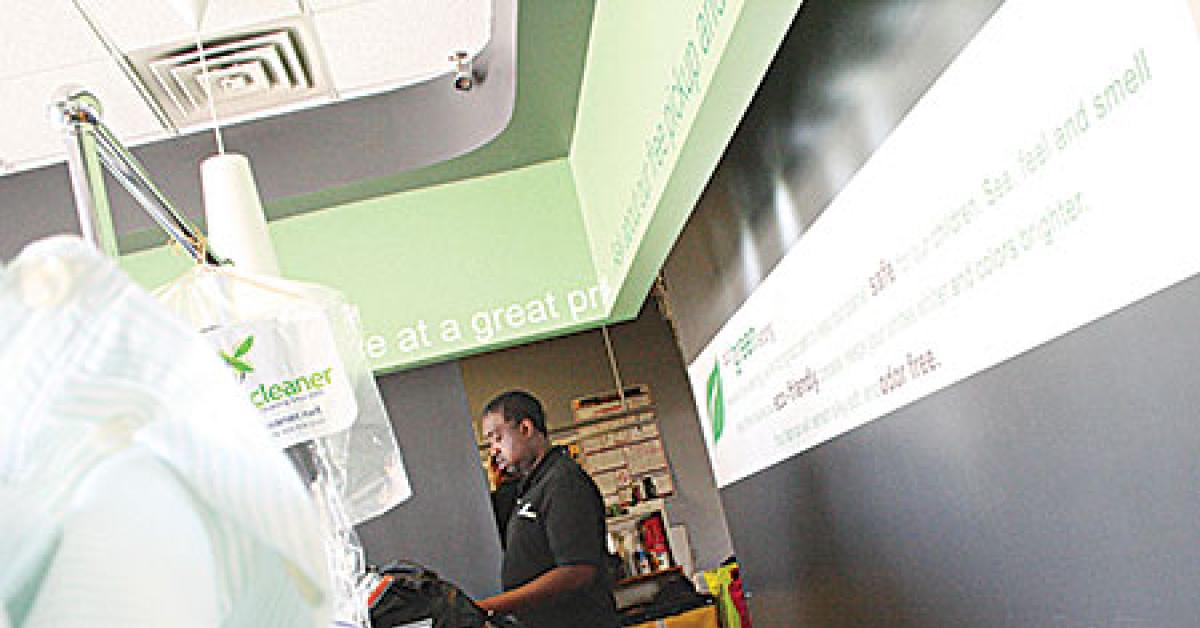PEMBROKE, Mass. — How much is your drycleaning business worth?
Many of you debate this question endlessly. After all, you’ve put your heart and soul into your enterprise.
Yes, you’ve drawn a good living, but there must be something extra for your entrepreneurial skills. In this hardscrabble economy, it is a feat just to keep a business going. There is extra, but it may not be as much as you think.
First of all, these aren’t the grand old days, where you could, if lucky, get 100% of the sales dollar.
Thirty years ago, if you did a million dollars volume for three steady years, you might have gotten a million or $800,000 for your business. Those days are gone.
For one thing, this is a tougher economy to do business in. Casualwear has sharply reduced demand.
Secondly, the United States is no longer the economic powerhouse it was in 1975.
Other economies — China, Germany, the EU — have gained ascendancy. One obvious cause is that the country has lost a portion of its manufacturing base.
With that understanding in mind, I reviewed a dry cleaner who does $240,000 in revenue. The business has been going for 18 years. The operation incurs $130,000 in expenses. That leaves $110,000.
The husband and wife, who both work 50- to 55-hour weeks, take that money out as income. In addition, the company employs three part-time workers. Equipment is valued at $50,000 to $100,000. The business is situated in a higher-end neighborhood and has a loyal customer base.
Let’s say a new owner bought the business, and he worked a 50-hour workweek. Assume he drew a $40,000 salary. He would have to hire someone to take the seller’s wife’s place. Say he could pay this person $40,000.
That’s $80,000 expenses, against a profit of $110,000. Profit is now $30,000 ($110,000 - $80,000 = $30,000).
So, from this analysis, we will assume that the business is now earning at the rate of $30,000 profit a year. That’s 12.5%, which is more or less in order with existing small-drycleaner figures.
Is this business sustainable?
If it has made $110,000 net for three of the last five years, that’s a good indication. If sales and net profit have been steadily increasing during the last five years, that’s an even better sign that the $30,000 figure is sustainable.
The principle of goodwill is that if the buyer can continue to make the same profit, then the price computation is a multiple of profit, most commonly three (3). So 3 x $30,000 = $90,000.
That’s the goodwill factor, for it is a reasonable assumption that the buyers will reap this profit for the next three years. But if the business is marginally situated, the multiple might be two.
CONSIDER THE IFS
If there is a strong chance that many of the machines will have to be upgraded soon, then that reduces the multiple. If the machinery is less efficient, and there is more efficient equipment already on the market, then that puts pressure to reduce the multiple to two or less.
On the other hand, if the neighborhood is becoming more upscale, where a higher percentage of residents will wear suits to work, then that might shift the multiple upward to four.
If there is reason to believe the area competition will be closing up soon, then that might increase the multiple. If the company has embarked on a new strategy to bring in more business, then that contributes to using a higher multiple.
But if none of this is happening, and yet the business is a going concern, then three (3) is a proper multiple.
Putting this all together, we have $65,000 asset value and $90,000 goodwill, for a total value of $155,000 ($65,000 + $90,000).
In my opinion, sight unseen, this business is worth $155,000. Of course, if the sellers have taken on debt, that amount must be deducted from the value.
What this amount means is that the buyers can theoretically borrow $155,000 to pay the sellers, take over the business, and make a living, even though they will be incurring a $7,750 interest expense ($155,000 X 5% = $7,750).
Here’s how the new income statement will look:
Sales $240,000
Base expenses 130,000
Added employee 40,000
Owner draw 40,000
Interest 7,750
Total expenses $217,750
Profit $22,250
Hopefully, the new owners will invest this profit in more efficient equipment or in marketing efforts to further increase business. But be clear: this is a turnkey venture.
The buyers can go in on day one and draw a salary.
They could take $20,000 profit a year and, in seven and a half years, wipe out debt while still drawing a salary.
The question remains: Could the owners sell the business for its rightful value, $155,000?
It could be worth $155,000, but if no one would pay $155,000 for the business, then they don’t get their price. Selling an enterprise depends on using good brokers, and convincing the buyer of the concern’s value.
Every business sale is a matter of compromise, negotiation and timing. If the sellers can’t sell their business at their asking price, they can wait and possibly consummate the sale the next year.
Now you can determine your own business’ value.
To read Part One, go HERE.
Have a question or comment? E-mail our editor Dave Davis at [email protected].

